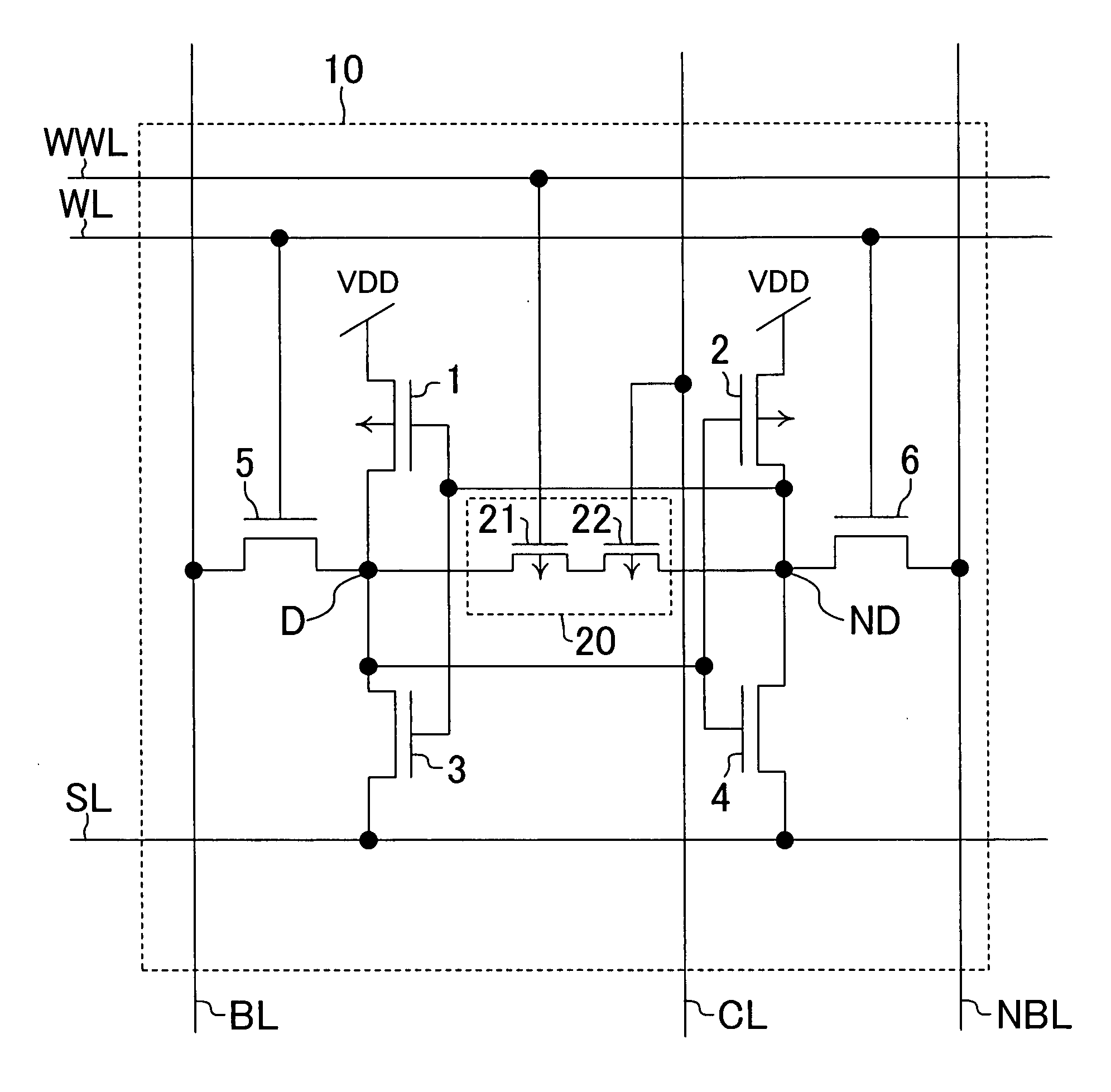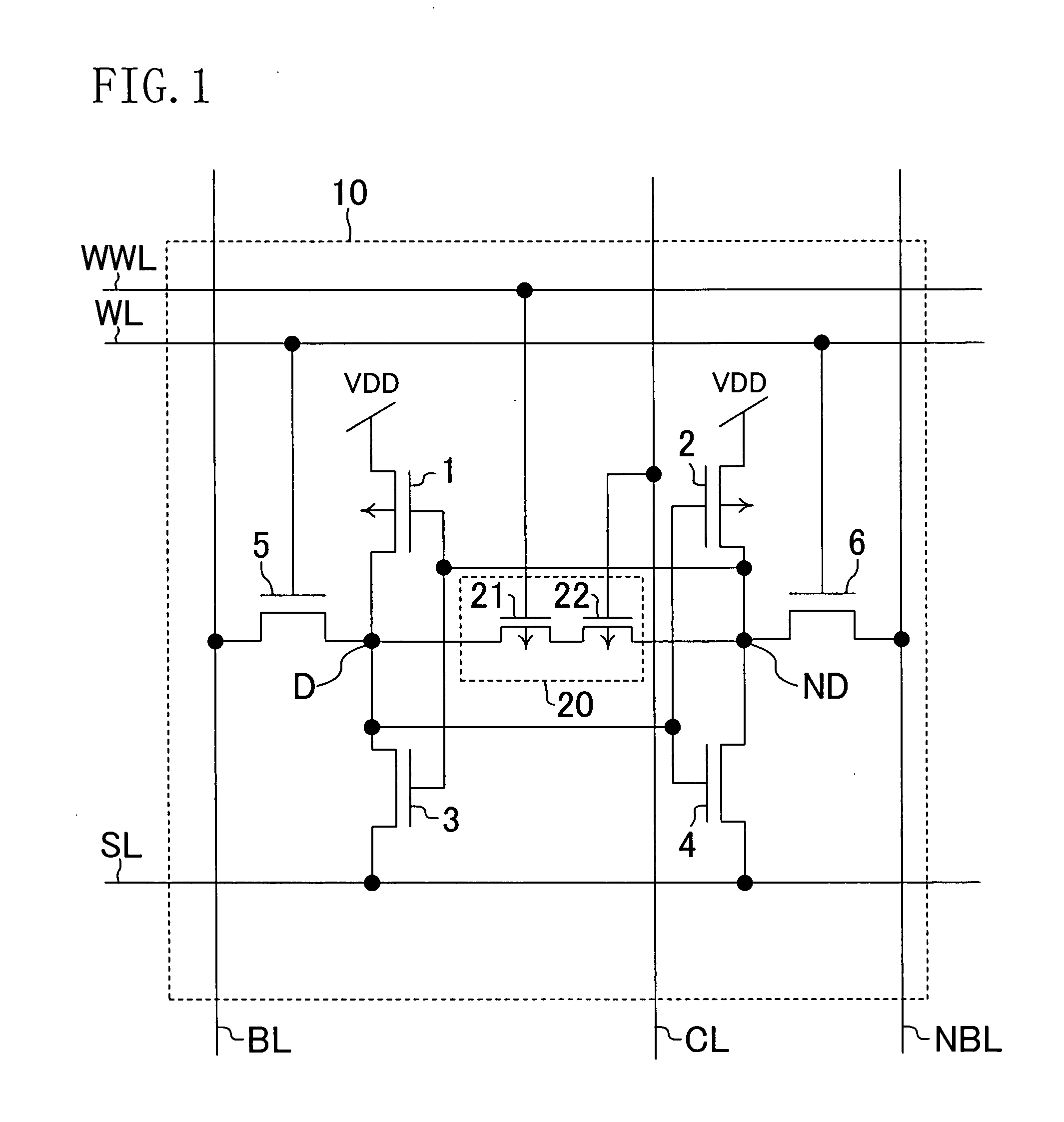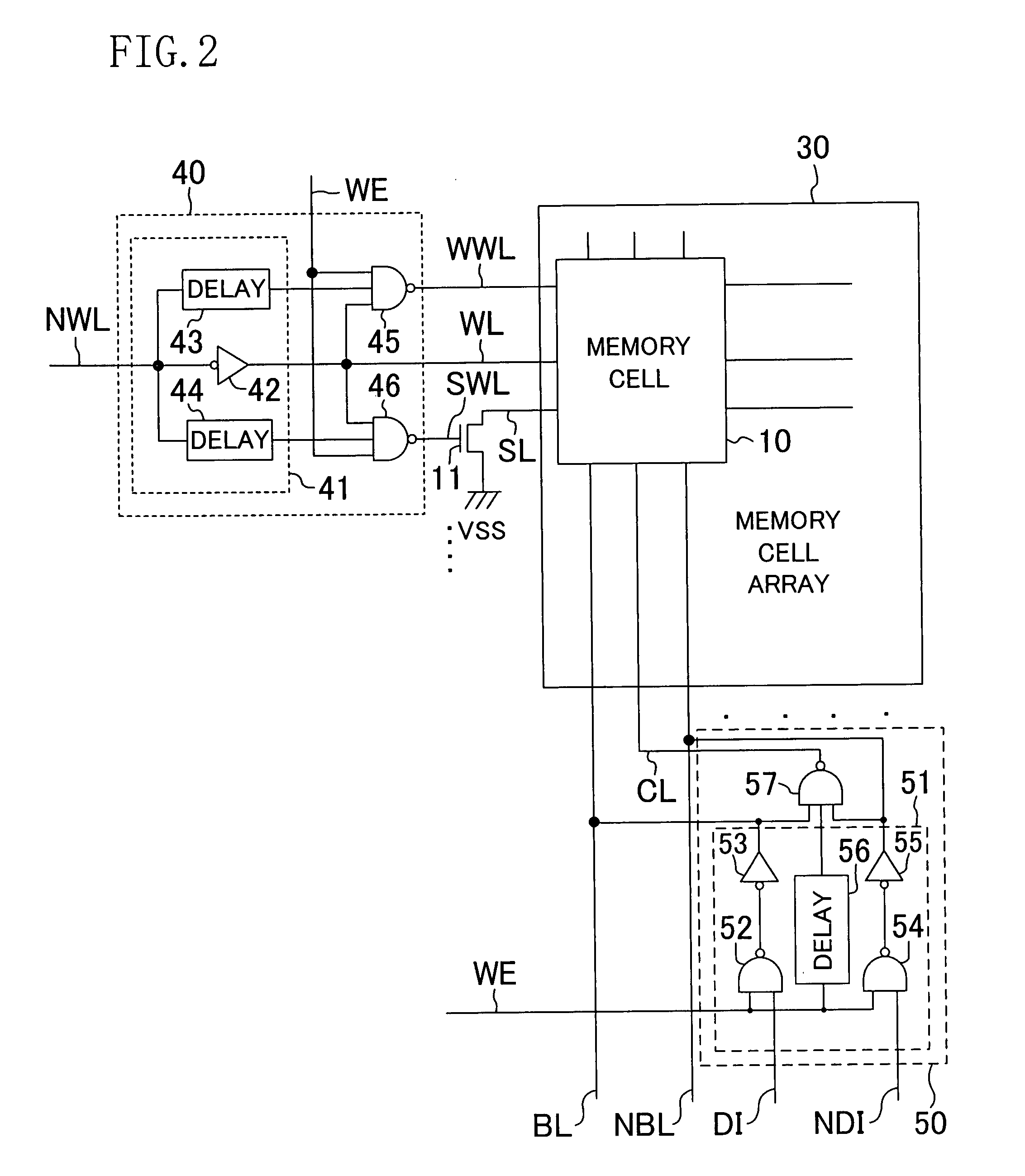Semiconductor memory device
a memory device and semiconductor technology, applied in the field of semiconductor memory devices, can solve the problem that excellent retention characteristics cannot be maintained specifically in low power supply, and achieve the effect of expanding the operation voltage margin in writing data and excellent retention characteristics
- Summary
- Abstract
- Description
- Claims
- Application Information
AI Technical Summary
Benefits of technology
Problems solved by technology
Method used
Image
Examples
Embodiment Construction
[0019]Hereafter, embodiments of the present invention will be described in detail with reference to the accompanying drawings.
[0020]FIG. 1 is a circuit diagram illustrating an exemplary configuration of a memory cell in an SRAM which is a semiconductor memory device according to the present invention. A memory cell 10 of FIG. 1 is a memory cell for storing complementary data in first and second storage nodes D and DN and includes first and second load transistors 1 and 2, first and second drive transistors 3 and 4, first and second access transistors 5 and 6 and a storage node voltage control circuit 20.
[0021]More specifically, the first load transistor 1 is a p-channel MOS transistor having a drain connected to a first storage node D, a source to which a power supply voltage VDD is supplied and a gate connected to the second storage node ND. The second load transistor 2 is a p-channel MOS transistor having a drain connected to the second storage node ND, a source to which the power...
PUM
 Login to View More
Login to View More Abstract
Description
Claims
Application Information
 Login to View More
Login to View More - R&D
- Intellectual Property
- Life Sciences
- Materials
- Tech Scout
- Unparalleled Data Quality
- Higher Quality Content
- 60% Fewer Hallucinations
Browse by: Latest US Patents, China's latest patents, Technical Efficacy Thesaurus, Application Domain, Technology Topic, Popular Technical Reports.
© 2025 PatSnap. All rights reserved.Legal|Privacy policy|Modern Slavery Act Transparency Statement|Sitemap|About US| Contact US: help@patsnap.com



